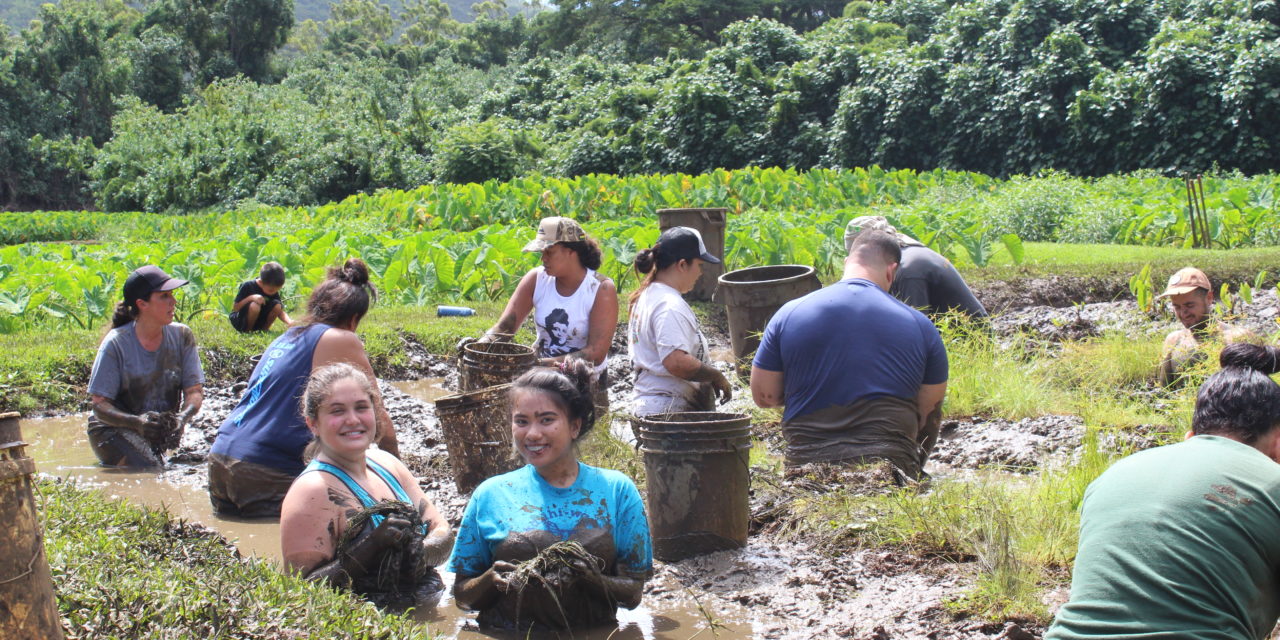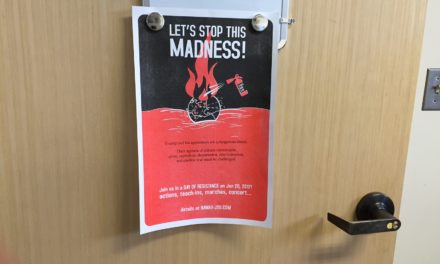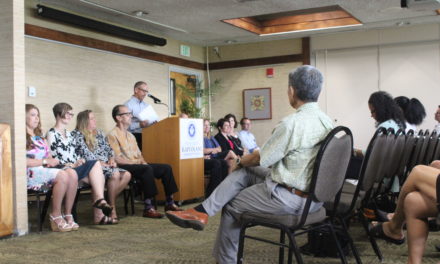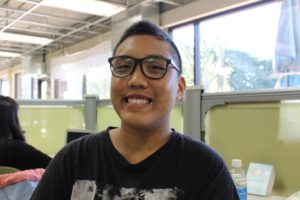By Mac Smith| Staff Writer
Last Saturday, Sept. 16, five Ecology Club members went to a Hoʻokuaʻāina workday on the windward side of the island. Hoʻokuaʻāina refers to restoring the land back to abundance and building a community through sharing of knowledge to future generations. Hoʻokuaʻāina is also the organization that hosted the workday.
From 8 a.m. to 12 p.m., the club members were waist-deep in mud pulling weeds from the taro patch, rinsing off extra mud then putting the weeds in a bucket that will be composted later.
Taro is a staple food item for Native Hawaiians. The importance goes back nearly 1,500 years ago, to when the first voyagers arrived on the Hawaiian islands. Taro was a sacred plant they carried with them.
“It is a great way to get involved in the community and learn about Hawaiian values and culture,” according to Katie Gipson, the Ecology Club president.
The purpose of the day was to pull weeds from the taro patches. It is important to pull the weeds thoroughly because once the taro is planted, pulling weeds becomes quite difficult.
Not only were students learning about the taro root but also the small community of animals that lived in these patches. The young kids that showed up to the event(not part of the ecology club) and got involved in the workday found the different animals and insects, such as the frogs, crickets, snails, and crawfish, especially interesting.
“Up until today, I always thought crawfish lived in [clean] freshwater but to find one in the muddy environment of the [taro] patches really intrigued me and I ended up learning more than I expected,” said Dina Kansowah, an 18-year-old communications major.
The hardest part of the day was when everyone was trying to get out of the mud. The mud suctioned around everyone’s legs and made getting out a group effort.
“Getting in and out of the mud was most difficult part of the day,” said Carmel Nanao, a liberal arts major,” but it was definitely fun getting muddy.”
While rinsing off the mud with a hose in the driveway, students talked about the reasons for joining in today’s event.
“I’m only here for [introduction to biology],” said Nanao. “I have to do service learning but I’ve had an interest in science. Since it’s only my first year, I want to explore more career options.”
Gipson has trouble finding activities related to her major. She volunteers at the zoo once a week but she is limited in the work she can do regarding her major.
“There’s not much for me to do [in Hawai’i as an aspiring large mammal research scientist] except for the Ecology Club and to get dirty,” she said.
The Ecology Club has events every month while school is in session and meets every other Wednesday from 10:30 a.m. to 11:30 a.m. in the STEM Center Conference Room in Kokio 202. The meetings are open to the public. Gipson is in the process of finalizing the next event at the Honolulu Zoo in October.
For more information, contact the Ecology Club at ecologyclubatkcc@gmail.com.






